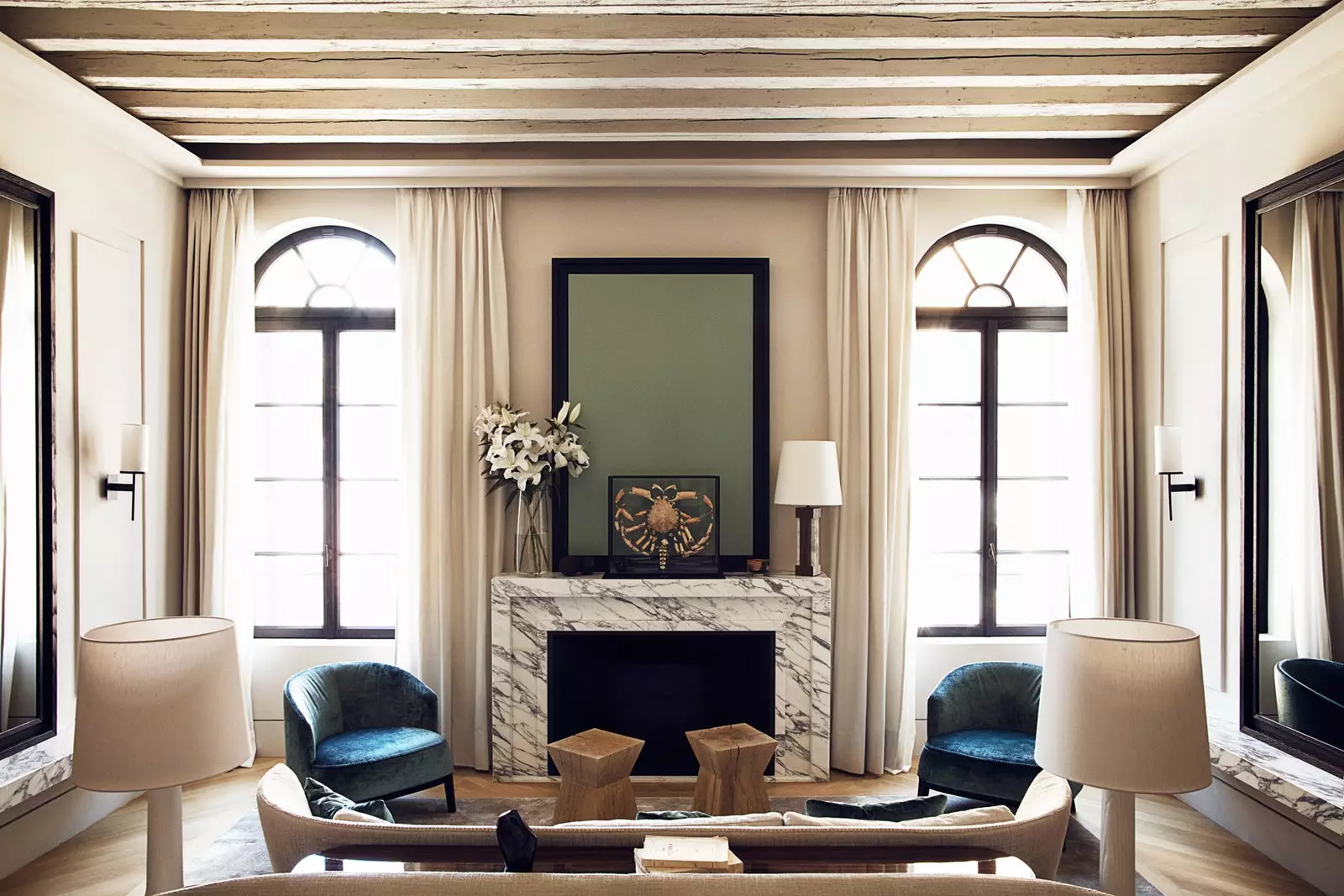
When Anna Covre and Fred Tibau bought the property, Volpi had been abandoned for fifty years
It is said that **no matter how many times you go to Venice,** the city never ceases to amaze you. It was a dream that caused the Venetian doge Peter Mocenigo, hero of the fight against the Turks, moved the location of his future tomb to the church of Santi Giovanni e Paolo in 1475.
After his burial, this minor basilica (oddly, the largest in all of Venice) became official mausoleum for the next 25 heads of state, currently housing the revered foot of Saint Catherine of Sienna and various paintings The Veronese Y Giovanni Bellini.
It is precisely in front of this baroque jewel that ** Palazzo Volpi is situated, ** whose building was part of the adjoining Grimani Palace, that between the fifteenth and nineteenth centuries housed an embassy and a consulate.
However, when Anna Covre and Fred Tubau went to acquire the property, Volpi had remained abandoned for the last 50 years, except for one monk who made use of his comfortable location.
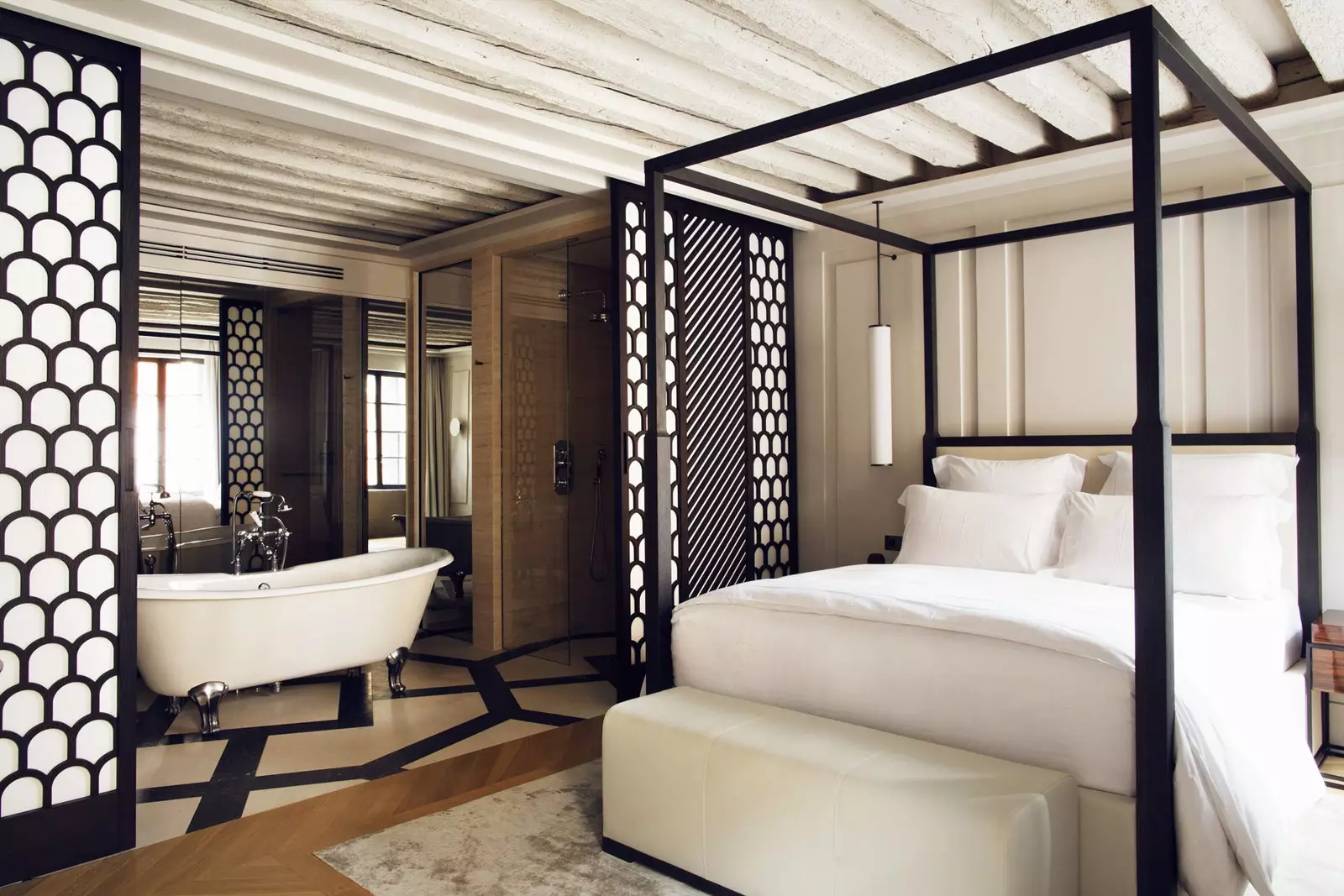
Bathtub with direct access to the bedroom, one of the many details of the Palazzo Volpi
Thus, and although the first intention of the owners was to acquire only the second floor for their personal use, finally Anna and Fred decided to invest an extra budget for the conservation of Santi Giovanni e Paolo and thus be able to acquire the building in its entirety.
The potential was evident, much more so if it is specified that it is currently made up of three suites with an apartment vocation, spread over two floors.
And it is that anyone who has visited Venice will know that the lack of apartments, beyond the purely touristic ones, and the city's excessively old-fashioned attachment to the more traditional hotels makes Palazzo Volpi a luxury as necessary as it is unique.
Located in residential castle neighborhood, where tourists do not crowd the narrow streets of the center, and the osterias and ciccheterias occupy the picturesque corners and surrounding interior gardens, Volpi is presented as an option for the visitor who is looking for peace without giving up a privileged location or the history of a city as fascinating as Venice.
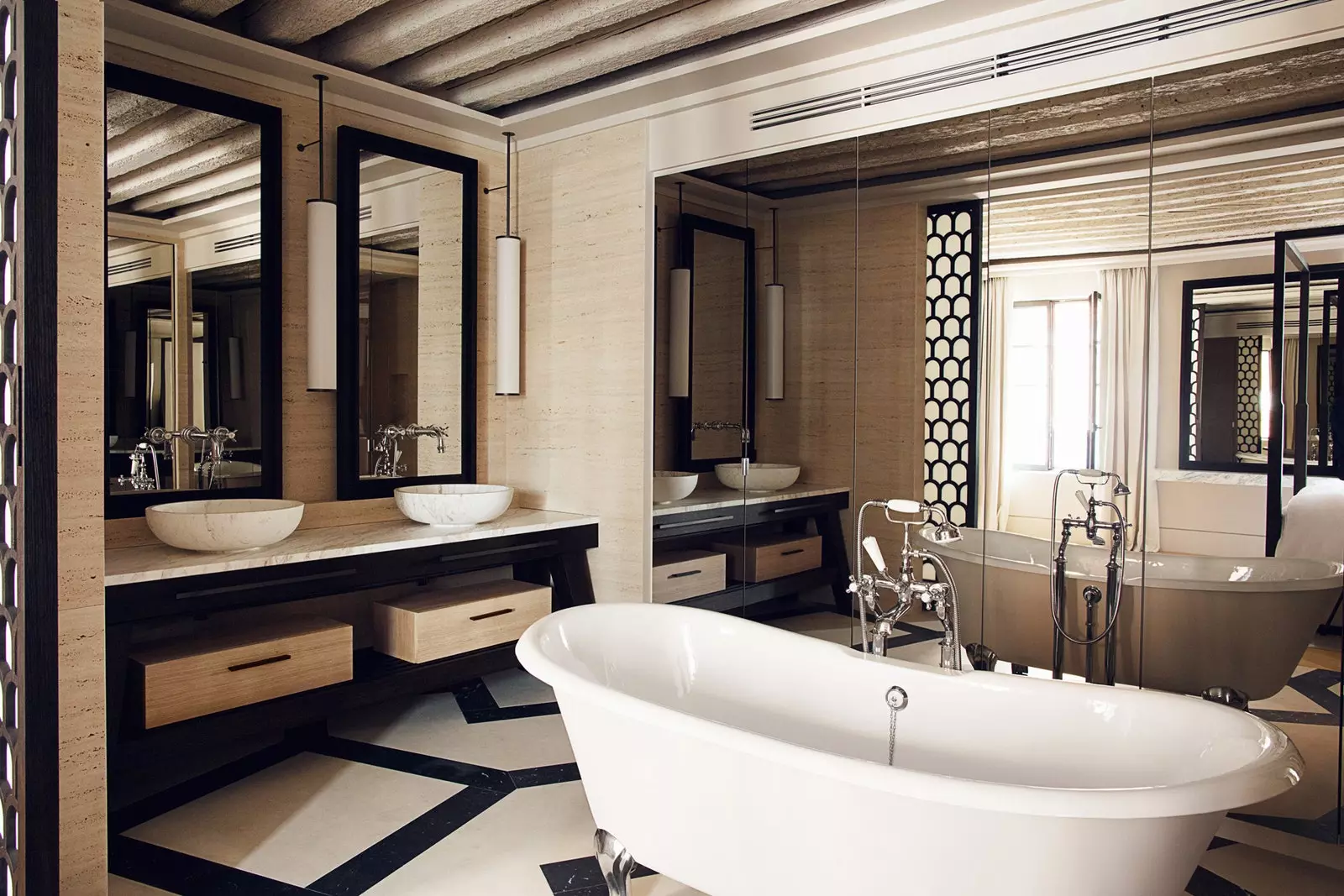
Each suite is presented as a different solution to each idea of stay
“The facades of the buildings cannot be touched without permission from the city council, who also hardly contributes to the management”, explain the owners of Volpi.
Namely; due to the acqua alta (or common flooding in the winter months), the council does not contribute financially to restore any facade or interior building for private use. On the contrary: it is the same public administration that approves the reforms and decides on the color of the facades.
“If there is any trace of color on the façade of your building, the façade It should be painted the same in its entirety. Fred explains. “If there is no trace of pigmentation, the chosen tone must fall within the natural ranges used in the past and always be in harmony with the set of adjoining buildings”.
Luckily, Palazzo Volpi can be seen in paintings by Cannaletto or Guardi, although its current interior distribution does not leave indifferent. Each suite is presented as a different solution to each idea of stay: the suites I and II, both on the first floor, offer accommodation from three to one bedroom, respectively.
Suite I is distributed as a duplex to the fully equipped kitchen and its garden at the bottom of the farm, which makes it ideal for any visit with children or friends.
Other highlights are the large lacquered marble table as desktop or pink velvet armchairs that dot along with the cream armchair in Italian linen; the living room, or the facing distribution of the bedrooms that casts a mirror effect, finished off by the paneling with wooden 'brocade' that hides the suite bathroom.
The best? Definitely the bathtub with direct access to the bedroom and the wardrobe-mirrors that make up the bathroom and are distributed among the rooms.
The third of the options **(Suite III) ** comprises 90 square meters divided into a bedroom with bathroom en suite, kitchen, living room and an outstanding artistic proposal.
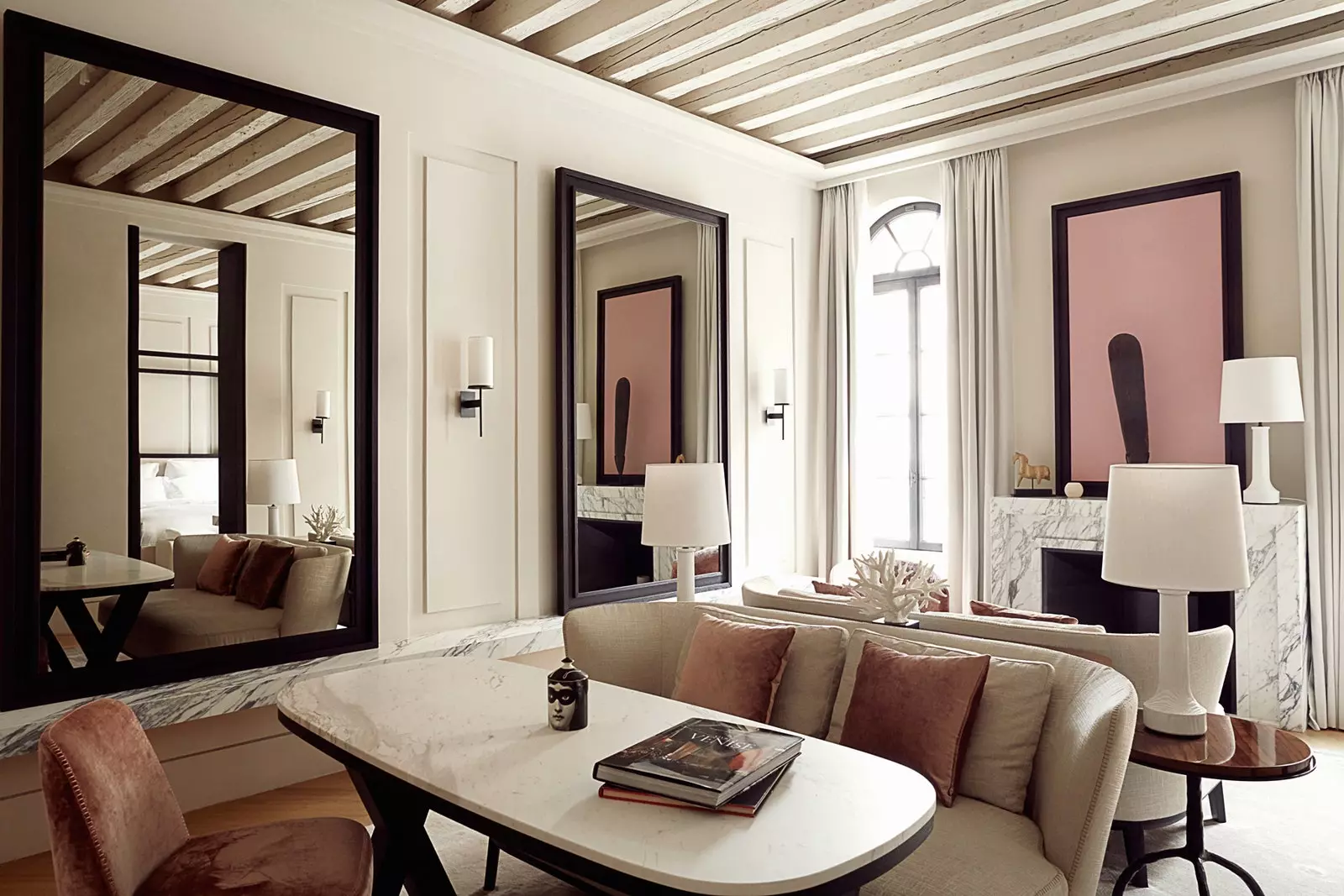
Suite III: 90 square meters with a careful artistic proposal
Anna and Fred, both designers and residents straddling Paris and Loisanne, have found in Venice the necessary inspiration to renew the Italian classics while preserving the essence of the most Venetian architecture.
From the floors, bathrooms and wall finishes, the marble –“traditional of the Veneto region”, as Anna points out, Venetian by birth- is one of the most present elements in the interiors of the Volpi suites.
The bicolor of cream and dark brown as a leitmotiv results in a decoration exuberant but minimalist at the same time.
“Our style is a mixture of Italian and French influences comment the creator and her Gallic companion. It is no coincidence that the exclusive French brand David Millett has been chosen for the toiletries and candles whose aroma (Salon d été) greets the guest from each room.
On the other hand, Italian classics such as **Frette (1860) , which signs the bathrobes** –with the embroidered house coat of arms– and the bedding, o Miele (appliances and surfaces) are also present.
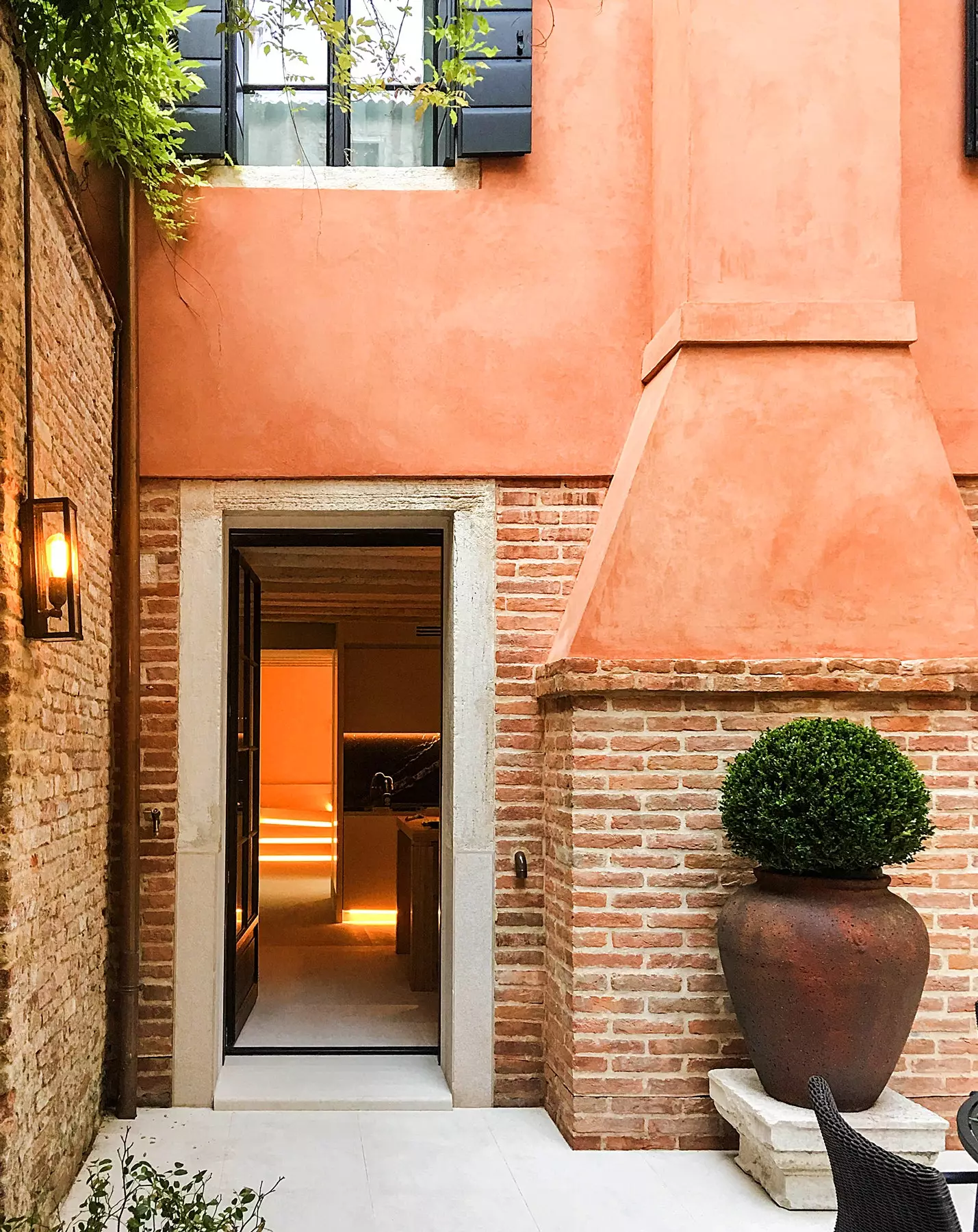
The garden of Suite I, one of the best hideaways in the city of canals
Paris, Tokyo or Seville are some of the cities where Anna has lived, although currently the couple has customers from all over the world.
"We travel a lot, but our favorite place is still Venice," says Fred. So much so that they are already immersed in the restoration of a building near the Opera (and with direct input from the channel) to consolidate the expansion of Volpi, whose opening is scheduled for 2020.
A beautiful madness that deserves to be enjoyed at least once in a lifetime.
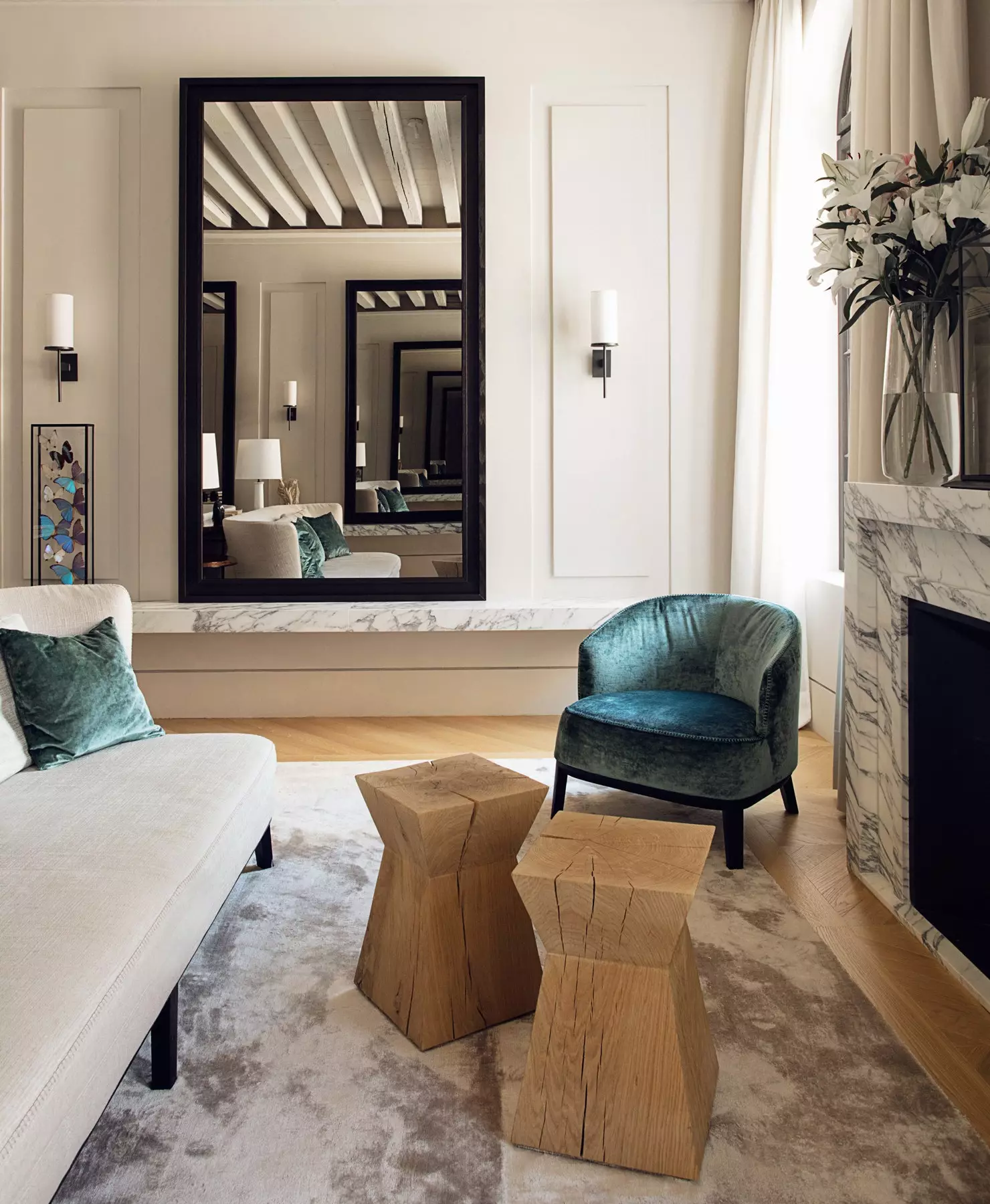
Can you think of a better way to enjoy the Venetian essence?
